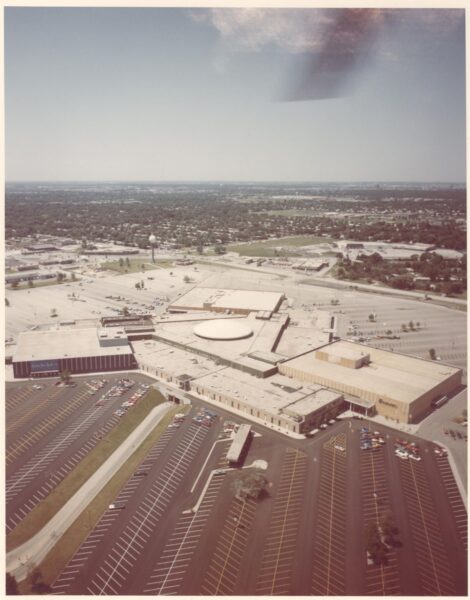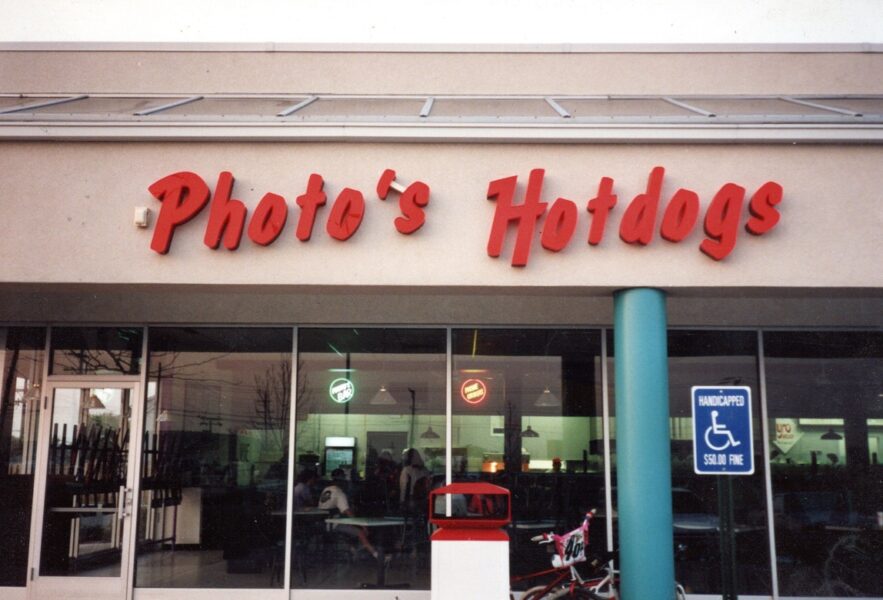See also our extensive essays on Randhurst
Does MPHS have photographs: Around 2,000 of them
Address: Rand and Elmhurst
Is building standing: Yes
What is at site: Randhurst Shopping Mall
When was business founded: Opened in 1962
Is business still operating: Yes
Who owned business: Originally, Randhurst Corporation
Interesting stories, facts, history:
Randhurst Shopping Mall was an incredible project in its time. Built on top of one of the last farms in Mount Prospect, construction started in 1958 and opened to the public in 1962. The mall was originally constructed by the Carson Pirie Scott Company, who purchased the land through the George L. Busse Realty Company. At the time Randhurst opened, it was the largest shopping center under one roof in America and possibly the largest shopping center in the world. People traveled miles to see the first modern shopping mall. In the first month of business there were over one million shoppers in Randhurst. Those who lived in Mount Prospect at the time remember the mall being so crowded that you could barely walk.
In the late 1960s and 1970s the Randhurst Corporation began hosting special events, such as fashion shows, children’s fairs, and educational programs. In both 1976 and 1977 the mall hosted a full three ring circus. The mall also brought in a number of celebrities such as Robert F. Kennedy, Arnold Schwarzenegger, Lou Ferigno, and cast members from the “Planet of the Apes.”
As other malls opened in the area the attraction to Randhurst declined. In the 1980s the mall went through a multi million dollar renovation adding, among other things, an upper level food court. In the 1990s the mall has brought in a number of free standing businesses around the perimeter of the building, such as Home Depot.



